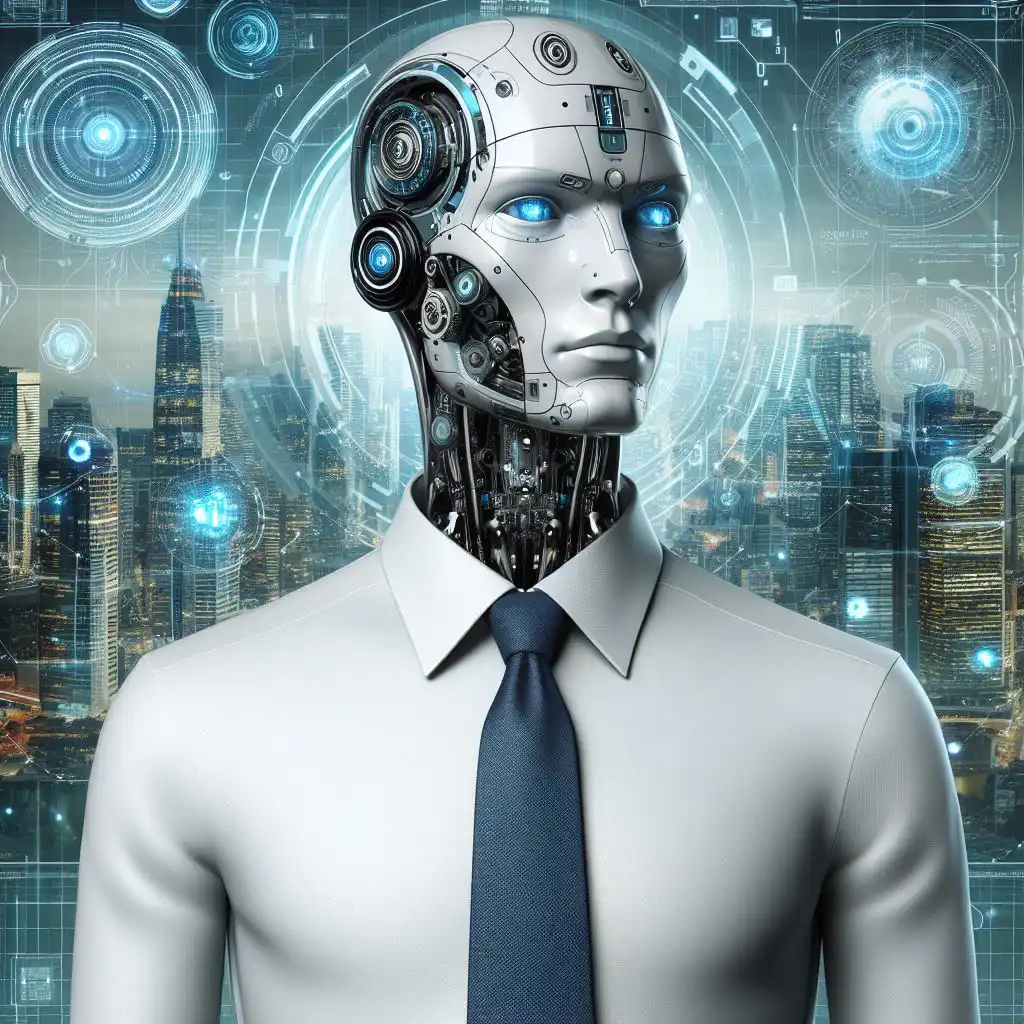Introduction
AI and the Future of Work, In recent years, artificial intelligence (AI) has transformed employment, reshaping traditional landscapes and introducing new dynamics across industries. This comprehensive guide explores the evolving relationship between AI and the workforce, covering its impact on job patterns, required skills, collaboration, challenges, and the associated ethical considerations.
AI and Employment Dynamics: Navigating the Changing Landscape of Work
Artificial intelligence is significantly altering the traditional dynamics of employment. This section explores the ways in which AI is reshaping roles and responsibilities within the workforce, leading to a paradigm shift in how we perceive and engage with work.
As AI systems become more sophisticated, the demand for specific skill sets and competencies is evolving. The once-static job market now requires adaptability and a willingness to embrace emerging technologies. This section examines the changing nature of employment influenced by AI.
Automation and Job Displacement: Understanding the Shift in Employment Patterns
The integration of automation into various industries has led to a transformation in employment patterns. This section investigates the impact of automation on job displacement, delving into industries most affected by the automation of routine tasks.
While automation streamlines processes and enhances efficiency, it raises questions about potential job loss in certain sectors. The discussion explores the nuanced relationship between AI, automation, and the workforce.

AI and Skill Evolution: Adapting to the New Demands of the Job Market
The evolution of AI brings forth new demands for skills in the job market. This section analyzes the influence of AI on the skill landscape, emphasizing the growing importance of competencies related to data science, machine learning, and AI programming.
As industries embrace AI technologies, individuals must adapt to stay relevant in the job market. The guide provides insights into the skills that will be in high demand as AI continues to reshape industries.
The Role of AI in Job Creation: Exploring Emerging Career Opportunities
Contrary to concerns about job displacement, AI also contributes to the creation of new opportunities. This section highlights instances where AI plays a pivotal role in generating novel career paths and fostering economic growth.
From AI development to ethical considerations and implementation, new roles are emerging in response to the dynamic integration of AI into various sectors. The discussion explores the diverse career opportunities that AI is ushering in.
Human-AI Collaboration in the Workplace: Maximizing Synergies for Productivity
A significant aspect of the evolving employment landscape is the collaborative effort between humans and AI. This section explores successful instances of human-AI partnerships across industries, showcasing how this synergy enhances workplace productivity.
As AI technologies become integral to daily operations, understanding how to maximize collaboration between human and artificial intelligence is crucial. Practical examples illustrate the potential of this collaborative approach.
Challenges of AI Integration: Addressing Concerns and Mitigating Risks
While AI presents numerous advantages, its integration into the workforce comes with challenges. This section examines the concerns related to job displacement, ethical considerations, and privacy issues associated with the use of AI in employment.
Addressing these challenges requires a comprehensive strategy to mitigate risks and ensure a smooth transition to an AI-inclusive work environment. The guide discusses strategies and best practices to address potential drawbacks.
Reskilling and Upskilling Initiatives: Preparing the Workforce for the AI Era
In preparation for the AI era, reskilling and upskilling initiatives are imperative. This section emphasizes the importance of educational programs and strategies designed to equip individuals with the necessary skills for AI-driven roles.
Through targeted initiatives, individuals can proactively adapt to the changing job market, fostering a workforce that is agile, knowledgeable, and ready to embrace AI technologies.

AI in Remote Work Environments: Shaping the Future of Telecommuting
The advent of AI has also influenced the landscape of remote work environments. This section explores how AI technologies are shaping the future of telecommuting, impacting communication, collaboration, and productivity in virtual workspaces.
As organizations embrace AI, remote work is undergoing a transformation, with AI tools facilitating seamless collaboration and communication in distributed work environments.
The Ethical Dimension of AI in Employment: Ensuring Fairness and Inclusion
Ethical considerations are paramount in the integration of AI into employment practices. This section explores the ethical dimensions of AI, emphasizing the importance of ensuring fairness, equity, and inclusivity in AI-driven workplaces.
As AI technologies become deeply embedded in organizational structures, maintaining ethical standards is crucial to fostering a positive and inclusive work environment.
Future Perspectives: Anticipating the Ongoing Evolution of Work in the AI Age
The guide concludes by speculating on the future of work as AI continues to evolve. It discusses potential developments, challenges, and opportunities in the ongoing integration of AI and employment.
Understanding the trajectory of AI in the workforce allows individuals, businesses, and policymakers to anticipate future trends and proactively navigate the evolving employment landscape.
In conclusion
This comprehensive guide delves deeply into AI’s influence on the future of work. It covers crucial topics like employment dynamics, automation, skill evolution, collaboration, challenges, and ethical considerations. By grasping these aspects, stakeholders can actively shape the ongoing evolution of the employment landscape in the AI age.



